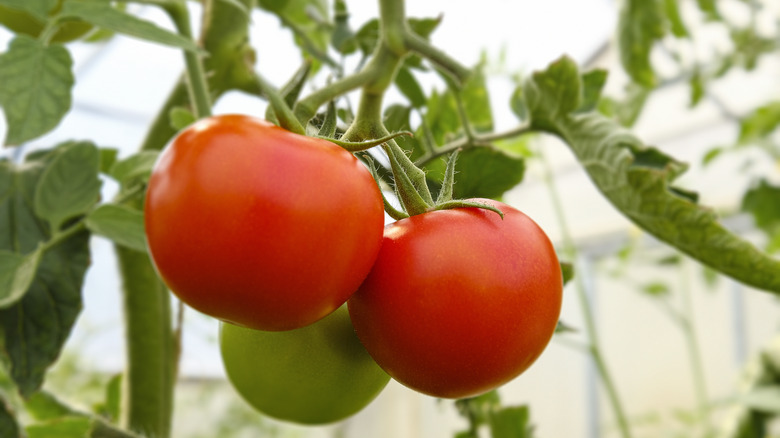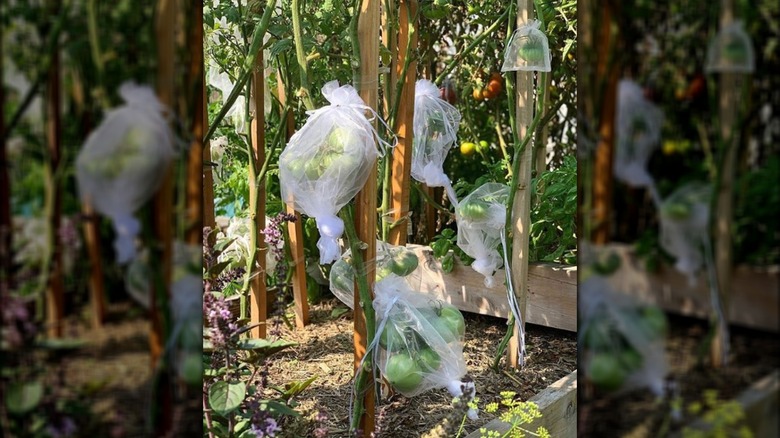How To Save Your Own Tomato Seeds, According To House Digest's Master Gardener
If you don't want to buy your garden seeds, know that the process for collecting seeds is different for most garden vegetables. For peppers, you can simply let the fruits ripen on the plant, cut them open, and collect seeds. For other plants, like those in the squash family, it's easy to save seeds, but they easily cross-pollinate. You never really know what kind of harvest you will get from a saved squash or pumpkin seed. Saving seeds from the gelatinous middle of tomatoes is a unique process because these seeds require fermentation to be viable the next year. The process is simple, but it does take up to two weeks from harvesting seeds to being able to store them in a dry place.
If you have fallen in love with a specific variety of tomatoes and want to save seeds, there is one main requirement to get a predictable harvest next year — only save seeds from open-pollinated heirloom varieties. Popular heirlooms include Cherokee purple, Amish paste, and Brandywine. Avoid saving seeds from hybrid tomatoes like Early Girl and Celebrity. Because hybrids are a combination of different types of tomatoes, fruit grown from these saved seeds are unlikely to have the exact same qualities as the parent plant.
Growing tomatoes for seeds
Tomato plants are self-pollinating, which means that each bloom has both male and female parts and is capable of producing a fruit. Because of this, one type of tomato is less likely to cross-pollinate with another type, but it is possible. Insects and wind can cause the pollen from one tomato flower to land on the pistil of another.
To ensure that you get the type of tomato you want next year from your saved seeds, cover the blooms as soon as they open. Fabric made from fine mesh, like organza, is the perfect option. You know those little drawstring bags you get at weddings or come with a jewelry purchase? They are perfect for covering flowers to keep out pollen while still allowing access to sunlight and airflow. These bags can be used yearly and are easy to find on Amazon. Once the blooms have faded and tiny tomatoes start to grow, you can uncover them. The self-pollination process is complete.
To ensure you get at least a couple of tomatoes for seeds, use these bags with a few clusters of blooms. You do not want to rely on successfully growing one tomato for all of next year's seeds. Mark the tomatoes you want to save with a small ribbon or whatever you have on hand. For smaller varieties of tomatoes, you can even leave the organza bag on to help protect your special tomatoes from pests. Let the fruit ripen fully on the plant.
Saving seeds for next year
Now that you have successfully grown heirloom tomatoes that have not been cross-pollinated (or stolen by naughty squirrels!), it's time to save those seeds. Slice the tomato and remove all the seeds and the gelatinous liquid around them. Place what you have collected in a small jar. For fermentation, the seeds need enough liquid to be fully covered, so squeeze extra water from the fleshy part of the tomato into the jar, if necessary — kind of like squeezing a lemon. Cover your jar with a layer of fabric or a paper towel to keep bugs out and allow air in, then place it somewhere warm. In about three days, you may notice mold and the smell of rotten tomatoes. That's the smell of fermented seeds that are ready to rinse and dry for storage.
Add water to your jar to rinse your seeds, freeing them of excess tomato goo and flesh. Pour the contents into a fine strainer to finish washing the seeds and remove all other materials. Lay the clean seeds in a single layer on clean paper towels to dry. Once they are completely dry, store your seeds in a cool, dry place and label them with the year they were saved and the variety. Now you are ready to start the process all over next year.

